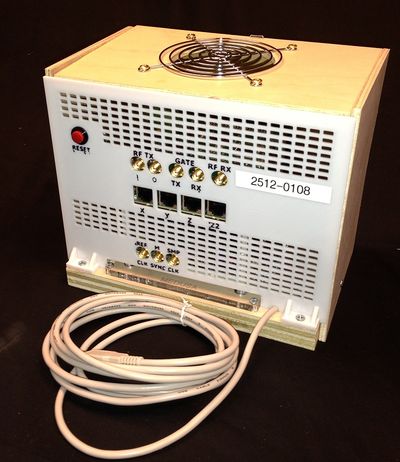Difference between revisions of "Hardware:Console"
Jump to navigation
Jump to search
| Line 2: | Line 2: | ||
The console interfaces with the computer via MATLAB. It produces the RF transmit pulses and gradient waveforms based on vectors created in a MATLAB sequence. It also acquires the received MRI signal at a time specified in the sequence. The console samples the received signal and downconverts it to baseband. Some specifics are at: http://mrsrl.stanford.edu/~medusa/hardware/ | The console interfaces with the computer via MATLAB. It produces the RF transmit pulses and gradient waveforms based on vectors created in a MATLAB sequence. It also acquires the received MRI signal at a time specified in the sequence. The console samples the received signal and downconverts it to baseband. Some specifics are at: http://mrsrl.stanford.edu/~medusa/hardware/ | ||
| − | The console is also described in detail in [[https://gate.nmr.mgh.harvard.edu/wiki/Tabletop_MRI/images/c/c0/Medusa.pdf | + | The console is also described in detail in [[https://gate.nmr.mgh.harvard.edu/wiki/Tabletop_MRI/images/c/c0/Medusa.pdf this journal article.]] |
| − | |||
| − | |||
[[File:medusabox.jpg|400px|thumb|right|figure 1. so and so]] | [[File:medusabox.jpg|400px|thumb|right|figure 1. so and so]] | ||
Revision as of 00:28, 14 August 2013
Console Part 1
The console interfaces with the computer via MATLAB. It produces the RF transmit pulses and gradient waveforms based on vectors created in a MATLAB sequence. It also acquires the received MRI signal at a time specified in the sequence. The console samples the received signal and downconverts it to baseband. Some specifics are at: http://mrsrl.stanford.edu/~medusa/hardware/
The console is also described in detail in [this journal article.]
